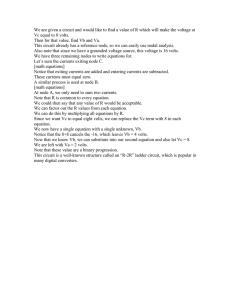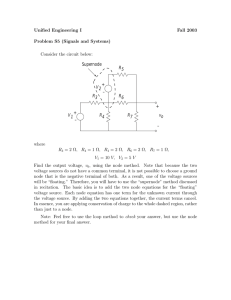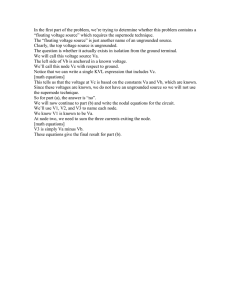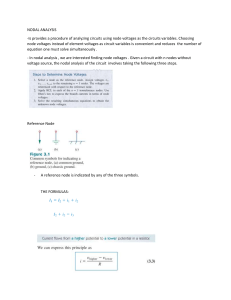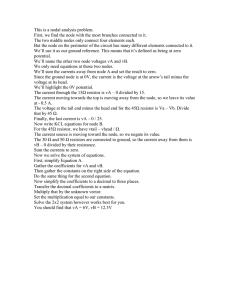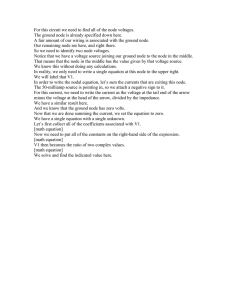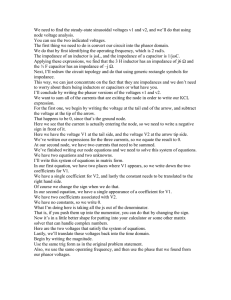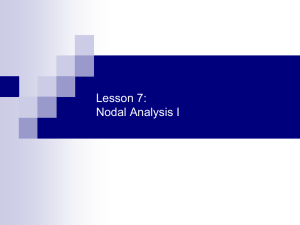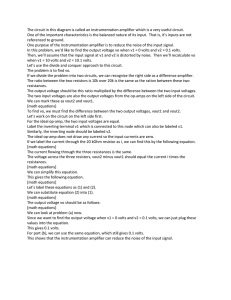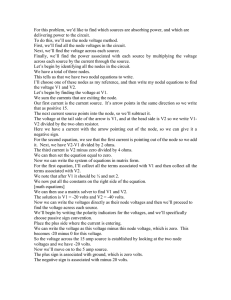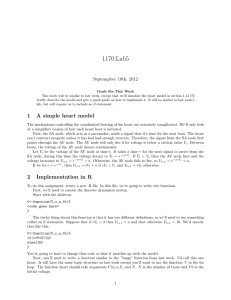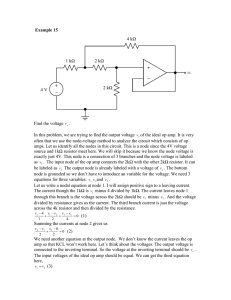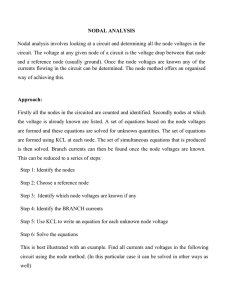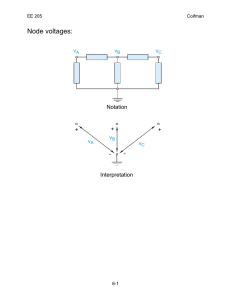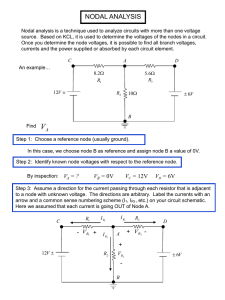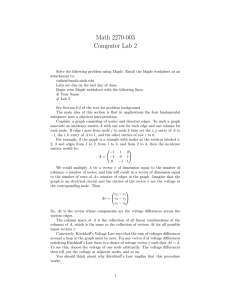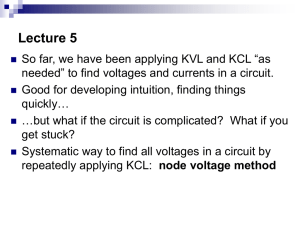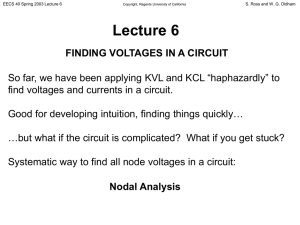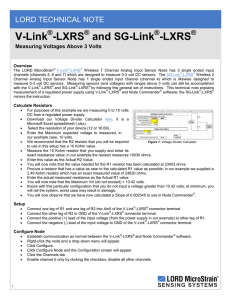Let’s find all the node voltages that exist in this... Let’s begin by identifying the nodes themselves.
advertisement
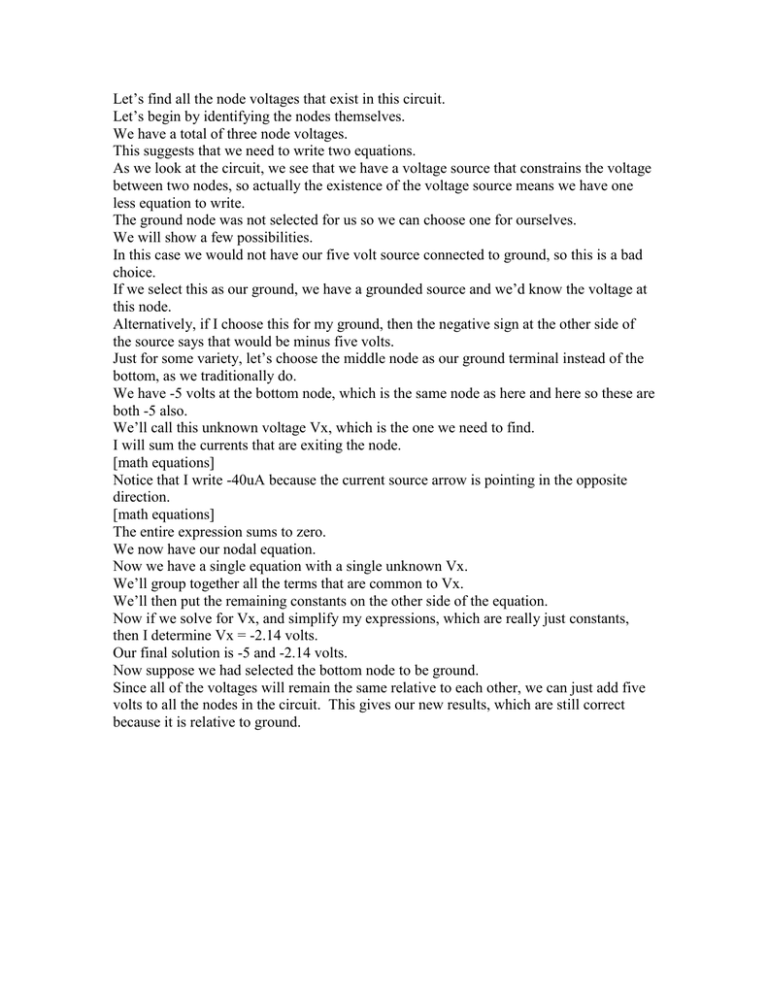
Let’s find all the node voltages that exist in this circuit. Let’s begin by identifying the nodes themselves. We have a total of three node voltages. This suggests that we need to write two equations. As we look at the circuit, we see that we have a voltage source that constrains the voltage between two nodes, so actually the existence of the voltage source means we have one less equation to write. The ground node was not selected for us so we can choose one for ourselves. We will show a few possibilities. In this case we would not have our five volt source connected to ground, so this is a bad choice. If we select this as our ground, we have a grounded source and we’d know the voltage at this node. Alternatively, if I choose this for my ground, then the negative sign at the other side of the source says that would be minus five volts. Just for some variety, let’s choose the middle node as our ground terminal instead of the bottom, as we traditionally do. We have -5 volts at the bottom node, which is the same node as here and here so these are both -5 also. We’ll call this unknown voltage Vx, which is the one we need to find. I will sum the currents that are exiting the node. [math equations] Notice that I write -40uA because the current source arrow is pointing in the opposite direction. [math equations] The entire expression sums to zero. We now have our nodal equation. Now we have a single equation with a single unknown Vx. We’ll group together all the terms that are common to Vx. We’ll then put the remaining constants on the other side of the equation. Now if we solve for Vx, and simplify my expressions, which are really just constants, then I determine Vx = -2.14 volts. Our final solution is -5 and -2.14 volts. Now suppose we had selected the bottom node to be ground. Since all of the voltages will remain the same relative to each other, we can just add five volts to all the nodes in the circuit. This gives our new results, which are still correct because it is relative to ground.

